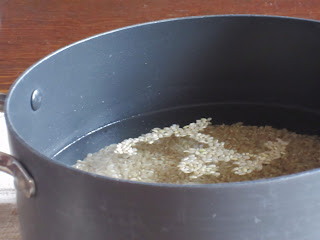It's that time of year again, and I have been feeling downright lousy as of late: coughing, congestion, weakness, and extreme
tiredness. Yesterday, though, my body was screaming out for soup.
I had just enough energy, so I made this soup and it turned out fabulous! My body thanked me.
2 carrots, diced
1 onion, thinly sliced as quarter moons
1 T minced garlic
1 T grated fresh ginger
2 T olive oil
1 15-oz can turkey broth (you may use chicken broth, but
the turkey broth turned out to be a wonderful flavor-enhancer).
½ c. fresh spinach
Salt and freshly ground pepper to taste
¼ c. frozen edamame (optional)
Pour very hot water over mushrooms to rehydrate
for about 20 minutes. Heat oil in pan
and sauté until translucent. Season with
pepper and add garlic, ginger, and carrots.
Sauté on low for 1-2 minutes.
Season with salt and add mushrooms with the mushroom broth it was
soaking in. This is an important step as
the broth adds additional flavor. Add
edamame, turkey broth, and spinach.
Simmer until vegies are cooked through.
Sample and season to taste.
**This is my original recipe. I love sharing, though, so please link back to this blog. Thanks!
This week I am linking up with the following parties:







